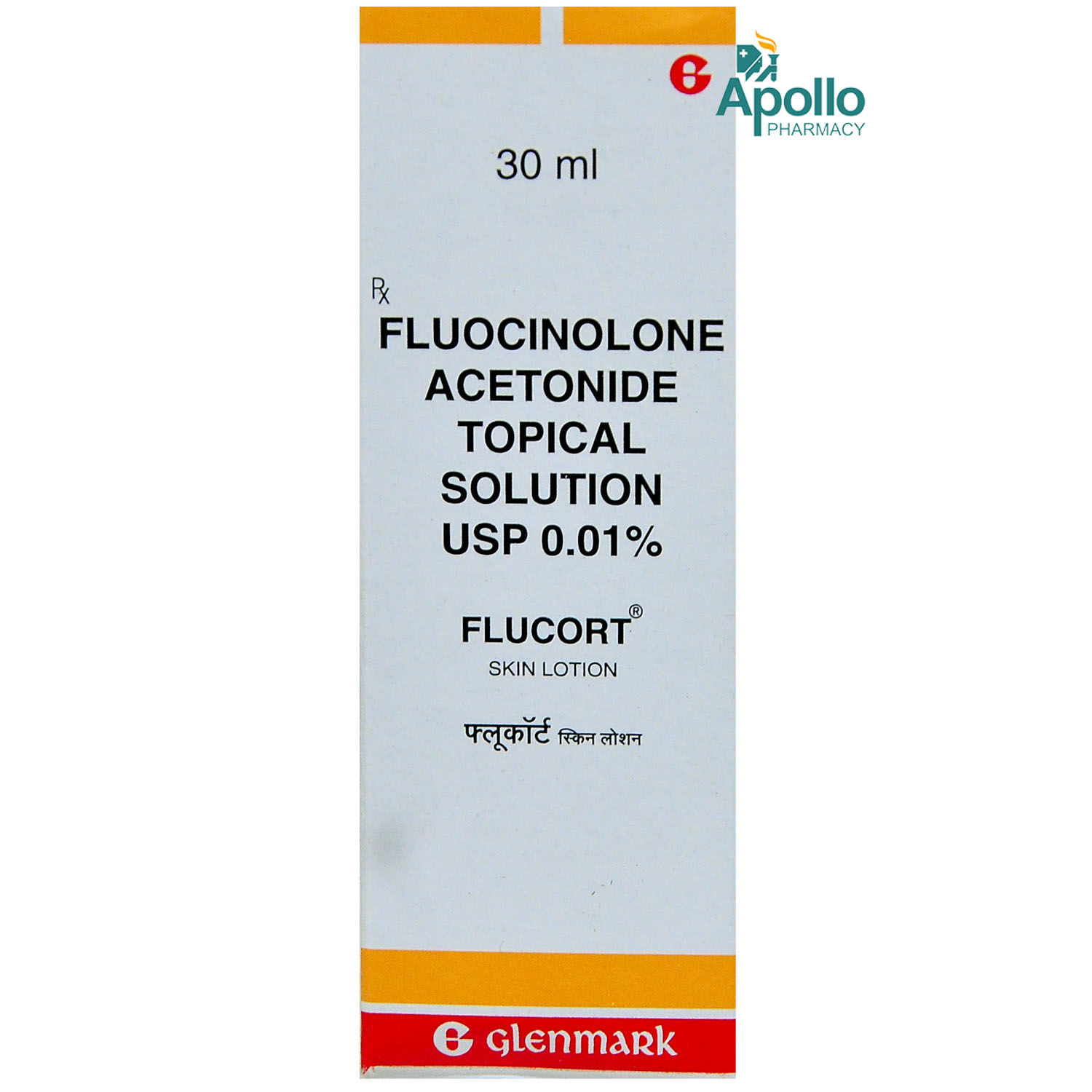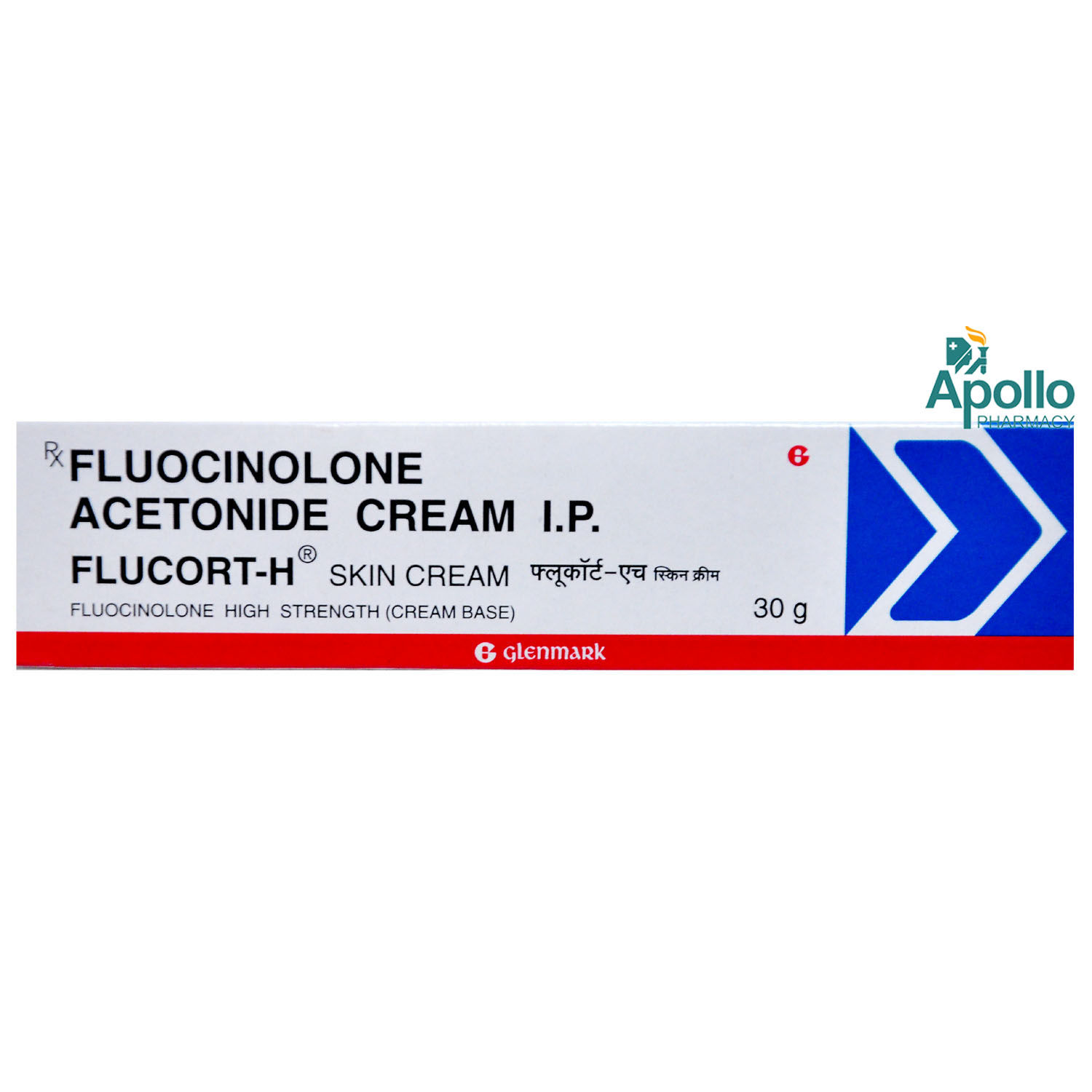Fluocinolone Acetonide
About Fluocinolone Acetonide
Fluocinolone Acetonide belongs to the class of medications called ‘Corticosteroids’ used to treat inflammation and itching caused by skin conditions such as seborrheic dermatitis, psoriasis, eczema and dermatitis. Seborrheic dermatitis is the inflammation of the oily glands present in the skin. Psoriasis is an autoimmune disorder that results in itchy and scaly rashes on the skin. Eczema is the red and itchy rashes on the skin that occur due to allergens such as pollen, food or other irritants. Dermatitis is a generalized term for inflammation of the skin.
Fluocinolone Acetonide contains ‘fluocinolone acetonide’, which belongs to the class of ‘corticosteroids’. It reduces the release of inflammatory mediators (chemicals that cause inflammation). It causes constriction of blood vessels, decreasing the access of cells to the injury site. This effect helps reduce swelling, pain, itching, and discomfort.
Fluocinolone Acetonide is for topical use. You should take this medicine as prescribed by your doctor. The common side-effects of Fluocinolone Acetonide are burning, itching, irritation or dryness of the skin, pimples, change in skin colour, small white or red bumps on the skin and tiny red bumps or rash around the mouth.
Do not take Fluocinolone Acetonide if you are allergic to ‘fluocinolone acetonide’ or any ingredients present in it. Before taking Fluocinolone Acetonide, inform your doctor if you have any skin infection, a history of reaction to any steroid, liver disease or an adrenal gland disorder. Inform your doctor if you are taking prescription, non-prescription medicines, herbal products or dietary supplements. Also, tell your doctor if you are pregnant or breastfeeding.
Uses of Fluocinolone Acetonide
Medicinal Benefits
Fluocinolone Acetonide contains ‘fluocinolone acetonide’ which belongs to the class of ‘corticosteroids’. It is effectively used to treat various inflammatory, allergic and autoimmune diseases. It works by interfering with the inflammation process. It reduces the release of chemicals that cause inflammation. It causes constriction (narrowing) of blood vessels, decreasing the access of cells to the site of injury. This effect helps in reducing the swelling, redness, itching and discomfort.
Directions for Use
Storage
Side Effects of Fluocinolone Acetonide
- Burning, itching, irritation or dryness of the skin
- Pimples
- Change in skin colour
- Small white or red bumps on the skin
- Tiny red bumps or rash around the mouth
Drug Warnings
Fluocinolone Acetonide should not be applied to damaged skin or open wounds. It should be used with caution in children as it may delay growth. It can increase your risk of infections as it can suppress the immune system. It should be used with caution in patients with diabetes, liver disease and skin infections. Inform your doctor if you are pregnant or breastfeeding.
Drug Interactions
Drug-drug interactions: No interactions found.
Drug-food interactions: No interactions found.
Drug-disease interactions: Fluocinolone Acetonide should be used with caution in patients with skin infections, liver disease, adrenal gland disorder, and diabetes.
Drug-Drug Interactions Checker List:
Safety Advice

Alcohol
cautionConsumption of alcohol may increase the risk of side-effects.

Pregnancy
unsafeFluocinolone Acetonide is a category C medicine. It should be used with caution in pregnant women as it may harm the unborn baby.

Breast Feeding
cautionFluocinolone Acetonide may get excreted in the breast milk. So, it should be used with caution in breastfeeding mothers.

Driving
safe if prescribedFluocinolone Acetonide may not affect the ability to drive.

Liver
cautionFluocinolone Acetonide should be used with caution in patients with liver diseases. Dose adjustments may be necessary.

Kidney
cautionFluocinolone Acetonide should be used with caution in patients with kidney diseases. Dose adjustments may be necessary.

Children
cautionFluocinolone Acetonide should be used with caution in children as it may affect growth.
Habit Forming
Diet & Lifestyle Advise
Eat a healthy and balanced diet and make sure you sleep at least 8 hours a day for a speedy recovery.
Include heart-healthy omega 3 fatty acid containing food drinks in your daily diet. You can also use low-fat cooking oil like olive oil, soybean oil, canola oil and coconut oil.
Avoid contact with any person who is having chickenpox, measles, tuberculosis as it might cause you the same infection as Fluocinolone Acetonide makes your body prone to infections.
Opt for food and drinks high in Omega 3 fatty acid to get relief from pain, swelling and inflammation. Omega 3 fatty acid-enriched foods include flaxseeds, walnut, soybean oil, salmon and tuna fish if you prefer non-veg.
Prefer more whole foods and grains instead of processed ones. Limiting starch may also help decrease inflammation.
Avoid intake of processed foods, foods high in sugar and fat, as these may cause inflammation.
Try to fill half your food plate with fruits and veggies.
Limit salt intake and prefer herbs or spices like garlic, ginger and turmeric, a natural anti-inflammatory.
Avoid alcohol as it can affect your stomach and intestine and limit the absorption of the important nutrients required by your body.
Special Advise
Do not use if there is an infection or sore in the area to be treated.
Though it is unlikely, Fluocinolone Acetonide may temporarily slow down a child's growth if used for a long time. See the doctor regularly so your child's height can be checked.
Patients Concern
Disease/Condition Glossary
Seborrheic dermatitis: Seborrheic dermatitis is a skin condition that causes an itchy rash with dry, flaky scales on the skin that contains oil glands such as the scalp, face, back, and upper chest.
Psoriasis: An autoimmune (immune system attacks healthy cells) skin disorder in which the skin becomes scaly, swollen up, and itchy.
Dermatitis: It is a skin condition that causes itchy, dry skin, or a rash on swollen, reddened skin.
Eczema: It is also called atopic dermatitis. It is a condition in which red and itchy rashes are seen on the skin, especially on the arms. It occurs due to allergens such as pollen, any foods, or other irritants such as soap.
FAQs
Fluocinolone Acetonide is used to treat inflammation and itching caused by skin conditions such as seborrheic dermatitis, psoriasis, eczema and dermatitis.
Fluocinolone Acetonide is a corticosteroid used in the treatment of inflammatory skin conditions. It also has antipruritic properties (reduce itching). It reduces the release of chemicals that causes inflammation, thereby reducing redness, swelling and itching of the skin.
While using Fluocinolone Acetonide, do not contact anyone who has shingles, chickenpox or measles. If you accidentally come in contact with any person having them, please inform your doctor immediately as it requires special treatment if you have not had these illnesses.
Do not use for longer-term unless prescribed by your doctor as prolonged use may cause thinning of the skin and easy bruising.
Fluocinolone Acetonide should improve your condition within the first 2 weeks of your treatment. Consult your doctor if the symptoms do not improve.
The side effects of Fluocinolone Acetonide include burning, itching, irritation or dryness of the skin, pimples, change in skin colour, small white or red bumps on the skin, tiny red bumps or rash around the mouth. If these side effects persist or worsen, please consult your doctor.
Fluocinolone Acetonide is effective against Trichophyton species which cause athlete’s foot, ringworm infection, and jock itch (fungal infection of the skin in the buttocks or groin). Additionally, it is effective against yeast known as Candida which commonly causes vaginal thrush (infection caused by overgrowth of yeast called Candida albicans).
Before using Fluocinolone Acetonide, clean and dry the affected area. Massage it into the skin gently and thoroughly. Take care to avoid getting the medication in your mouth or eyes. If Fluocinolone Acetonide gets in your eyes accidentally, wash with plenty of water and contact your doctor if your eyes are irritated.
You should see an improvement in the symptoms of skin infection, such as soreness or itching within a few days of treatment with Fluocinolone Acetonide. However, the signs such as scaling and redness may take longer to disappear. Even if you feel better, do not stop using Fluocinolone Acetonide before the duration advised by your doctor.
The type of infection determines the duration of treatment. In general, for tinea infection, the treatment with Fluocinolone Acetonide is continued for 1 month for and for candida infection for at least for 15 days. Do not stop using Fluocinolone Acetonide on your own even if you feel better because the infection may recur as it takes some time to kill the fungus.
Fluocinolone Acetonide is safe for children only if it is used as prescribed by the doctor.
Keep the affected areas of the skin clean and dry but avoid excessive rubbing. Although, itching may want you to scratch, avoid scratching as it will damage the skin’s surface and cause the infection to spread further. Avoid sharing towels, bath mats, etc. with other people as you could spread the infection to them.
Fluocinolone Acetonide may reduce the effectiveness of rubber contraceptives, like condoms and diaphragms. If you are using the cream on the penis or vulva, you are recommended to use alternative contraceptive methods, for at least 5 days after using Fluocinolone Acetonide.
No, do not stop using Fluocinolone Acetonide without consulting your doctor even if you feel better as your symptoms may improve before the infection is completely cured. Therefore, for better and complete treatment, it is advised to use Fluocinolone Acetonide for the prescribed duration.








